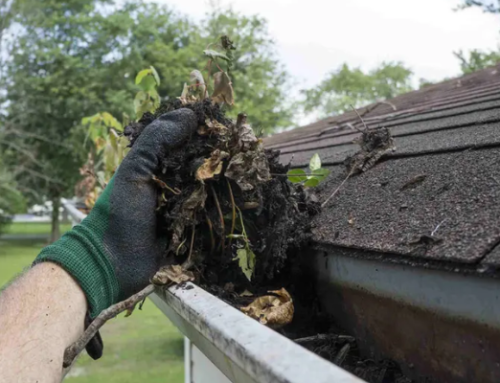Roofs have a sturdy design and are built to withstand storms. They provide protection to the house and the family inside. But even the sturdiest of roofs can sustain severe damage. Sometimes the signs of damage are visible from the ground. Other times, you have to climb onto the roof to assess the damages.
Storms can have a devastating impact on roofs. Even if the storm does not bring hail or rain, it can damage roofs in a severe way. During storms, if the speed of wind is more than 50 to 60 miles per hour, the high wind can bother stress points on the roof. Over time, the damages caused by high winds can impact the structural integrity of the roof and its underlayment. You must always watch out for the signs of wind damage to your roof. Taking immediate action will prevent further damage. What should you look for? Here are some ideas…
#1 Wind Damage Signs On The Shingles:

Wind can damage the shingles and cause widespread problems on the roof. Due to high winds, shingles can blow off and expose the roof underlayment to harsh weather. This is a risk to the structural integrity of the roof.
Additionally, you can spot signs of damage on the shingles. You can observe granules missing from the shingles and piling up in the gutter. Those granules are a protective layer over the shingles that reflect UV rays. The missing granules create blemishes and spots on the shingles. Sometimes you can observe blisters and bubble formation on the shingles as well.
#2 Curling and Lifting Of The Shingles:
When the wind creates pressure points on the roof, it will have a severe impact on the edges of the shingles. The shingles’ edges start curling up and peeling off due to excessive pressure. This will lead to water infiltration inside the house if you delay in taking proper measures.
#3 Presence Of Cracks And Tears In The Roof:
Due to high winds, the shingle corners and edges sustain tears and cracks. Due to this, the shingles are unable to prevent water and moisture from entering the roof underlayment. This can have a serious implication on the structural integrity of the roof.
#4 Damage Caused To Soffits And Fascia:
The role of the soffits and fascia is to prevent water leaks or infiltration inside the home. They act as a defense for the roof and attic vents. These components are efficient in preventing water leaks during heavy rainfall and snowfall, but high winds can damage them!
#5 Broken Gutters And Downspouts:

The gutters of the roofing system are responsible for collecting rainwater and melted snow to keep the roof dry and clean. The water is directed to the downspout and then to the drainage system. During stormy weather or high winds, the gutter edges and corners develop cracks in them. Due to this, water drips out from the gutters and debris clogs the gutters as well; The clogged debris increases pressure on the gutters and they often dislodge from the roof. Meanwhile, if tearing and cracks are present on your downspout(s), attention is required.
#6 The Impact Of Wind On The Roof And Attic Ventilation:
Ventilation has the responsibility to keep the internal temperature of a house cool and the roof dry. During high wind storms, the ventilation system can break down. It cannot take the high-speed winds and may develop cracks. Due to this, the insulation of the house does not work effectively. You can observe changes in your utility bills.
Summary:
Storm destruction is not healthy for your roof or your home in general. You must assess the damages and call professionals to manage the situation. The professionals at Born Carpentry have extensive experience to repair all of your roofing damages. Born Carpentry is in Andover, MN, and can be reached by calling 612-747-8003.






